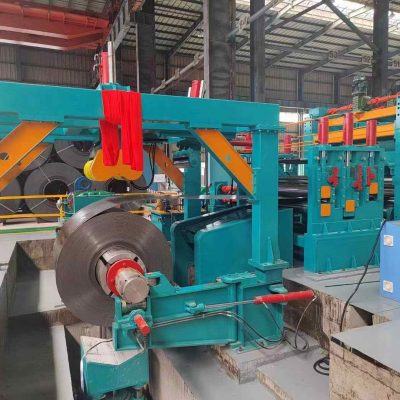Low-Temperature Stainless Steels: Types 304 and 304L
Stainless steels are renowned for their corrosion resistance, but specific types like 304 and 304L stainless steels are particularly suited for low-temperature service. This blog will explore the unique properties, applications, and benefits of these steels in such environments, providing authoritative and detailed insights.

Introduction to Low-Temperature Stainless Steels
Low-temperature stainless steels, specifically Types 304 and 304L, are widely used in environments where temperatures can plunge well below freezing. These steels are essential in industries such as petrochemical, cryogenic, and food processing, where maintaining structural integrity at low temperatures is critical.
Types 304 and 304L stainless steels are austenitic grades that contain chromium and nickel, making them highly resistant to corrosion and oxidation. The “L” in 304L stands for low carbon, which enhances its weldability and minimizes carbide precipitation during welding.
Properties of Type 304 Stainless Steel
Type 304 stainless steel is the most versatile and widely used of all stainless steels. Its chemical composition includes approximately 18% chromium and 8% nickel, giving it excellent corrosion resistance and strength at low temperatures.
- Corrosion Resistance: Type 304 stainless steel provides excellent resistance to a wide range of atmospheric environments and many corrosive media.
- Tensile Strength: At room temperature, it has a tensile strength of approximately 515 MPa.
- Yield Strength: The yield strength is around 205 MPa at room temperature.
- Ductility: It has good ductility, which allows it to be formed into various shapes.
Properties of Type 304L Stainless Steel
Type 304L stainless steel is a low-carbon version of 304. It has similar mechanical properties to 304 but with a lower carbon content, which helps prevent carbide precipitation during welding. This makes it ideal for heavy gauge components that need to be welded.
- Corrosion Resistance: Like 304, 304L has excellent corrosion resistance in a wide range of environments.
- Tensile Strength: Slightly lower than 304, with a tensile strength of around 485 MPa.
- Yield Strength: Approximately 170 MPa.
- Ductility: Similar to 304, maintaining good ductility for forming.
Applications of Low-Temperature Stainless Steels
The applications of Types 304 and 304L stainless steels are diverse, especially in low-temperature environments. These applications leverage the materials’ ability to maintain strength and resist corrosion under extreme conditions.
- Cryogenic Equipment: Used extensively in the production and storage of liquefied gases such as oxygen, nitrogen, and argon.
- Food Processing: Ideal for applications requiring cleanliness and resistance to organic and inorganic chemicals.
- Petrochemical Industry: Employed in pipelines and equipment handling low-temperature liquids and gases.
- Pharmaceutical Industry: Used in manufacturing and storage equipment due to its resistance to harsh chemicals and ease of cleaning.
Performance at Low Temperatures
Low-temperature stainless steels must maintain their toughness and resistance to brittle fracture at low temperatures. Types 304 and 304L stainless steels perform exceptionally well in this regard.
Tensile Properties at Low Temperatures
According to the data, the tensile properties of Types 304 and 304L stainless steels are significantly influenced by temperature. At temperatures as low as -196°C, these steels maintain impressive mechanical properties.
Tensile Properties of Types 304 and 304L Stainless Steels at Low Temperatures
| Temperature (°C) | Type 304 (MPa) | Type 304L (MPa) |
|---|---|---|
| Room Temperature | 515 | 485 |
| -100 | 760 | 750 |
| -196 | 870 | 860 |
Impact Toughness
The impact toughness of these steels also remains high at low temperatures. This property is critical for preventing brittle fracture under impact loading conditions.
Weldability and Fabrication
Type 304L’s lower carbon content makes it particularly suitable for welding. It reduces the risk of carbide precipitation, which can lead to intergranular corrosion in welded areas.
ASME Boiler and Pressure Vessel Code Provisions
Both 304 and 304L stainless steels conform to the ASME Boiler and Pressure Vessel Code, making them suitable for use in high-pressure and low-temperature applications. The code specifies maximum allowable stresses, ensuring safe and reliable performance.
Availability and Cost
Types 304 and 304L stainless steels are readily available in various forms, including plates, bars, and sheets. Their widespread availability and competitive cost make them a popular choice in many industries.
Cost Comparison of Low-Temperature Stainless Steels
| Type | Cost ($/kg) |
|---|---|
| Type 304 | 2.50 |
| Type 304L | 2.60 |
Availability of Low-Temperature Stainless Steels
| Type | Plates | Bars | Sheets |
|---|---|---|---|
| 304 | Yes | Yes | Yes |
| 304L | Yes | Yes | Yes |
Conclusion
Low-temperature stainless steels, particularly Types 304 and 304L, are indispensable in applications where both high strength and excellent corrosion resistance are required at low temperatures. Their mechanical properties, weldability, and compliance with industry standards make them a reliable choice for engineers and designers.
By understanding the unique properties and advantages of these steels, industry professionals can make informed decisions to ensure the longevity and performance of their applications. As such, low-temperature stainless steels continue to play a critical role in advancing technology and industry standards.
References
Nickel Institute. “Types 304 and 304L Stainless Steels for Low Temperature Service.”
ASME Boiler and Pressure Vessel Code.
Industry data on mechanical properties and performance at low temperatures.
This comprehensive look at low-temperature stainless steels highlights their importance and versatility in various industrial applications. For those seeking reliable materials that perform under extreme conditions, Types 304 and 304L stainless steels remain a top choice.



